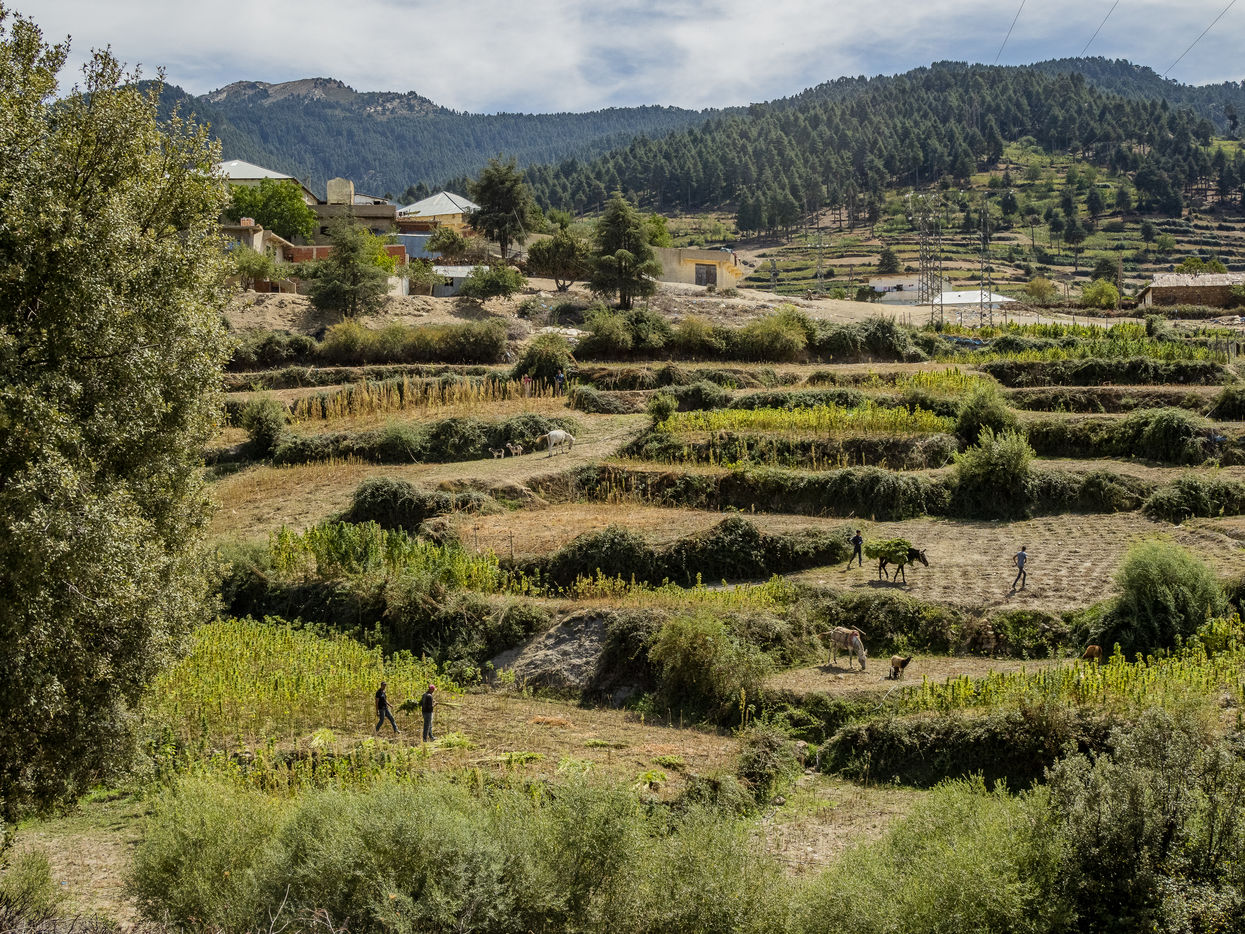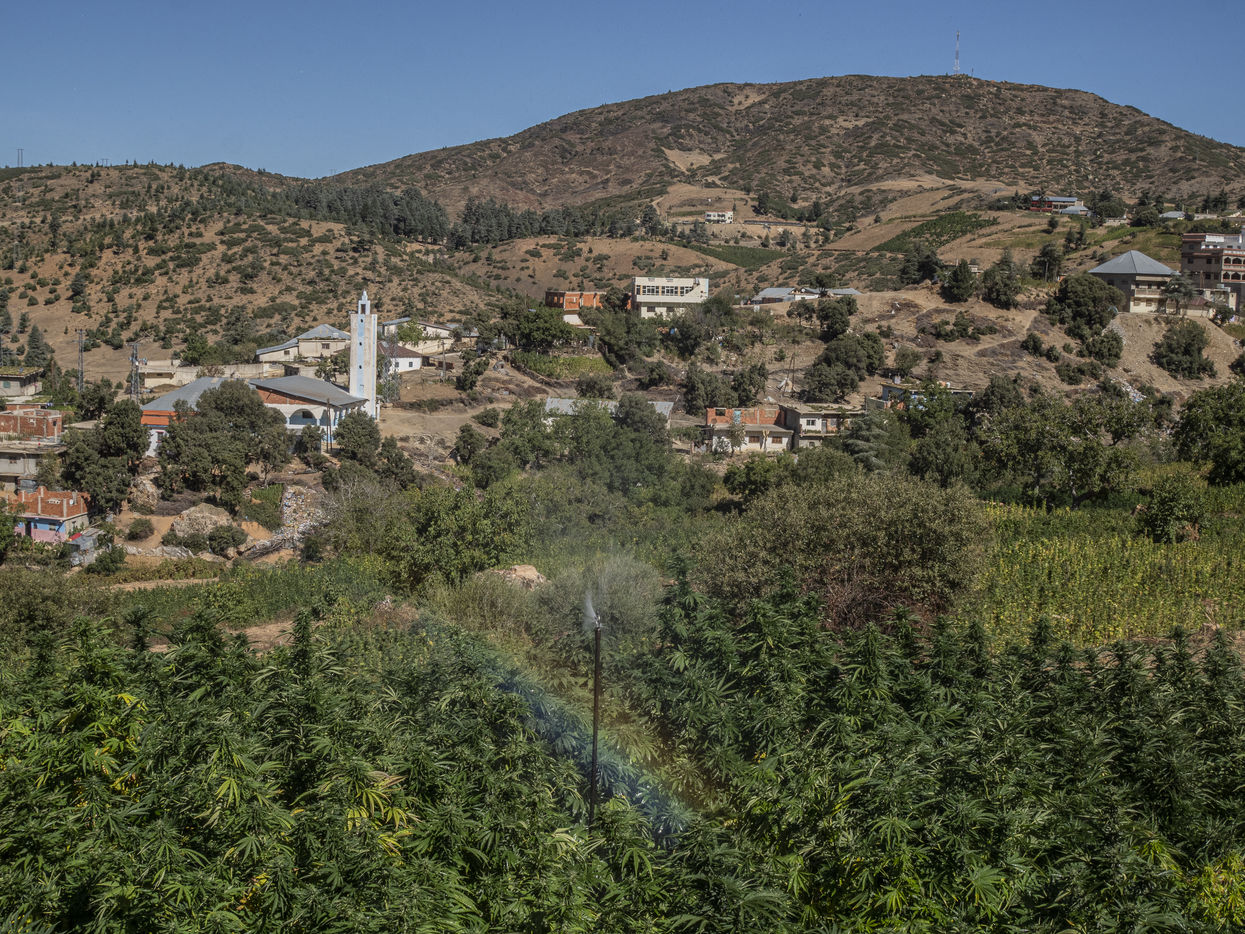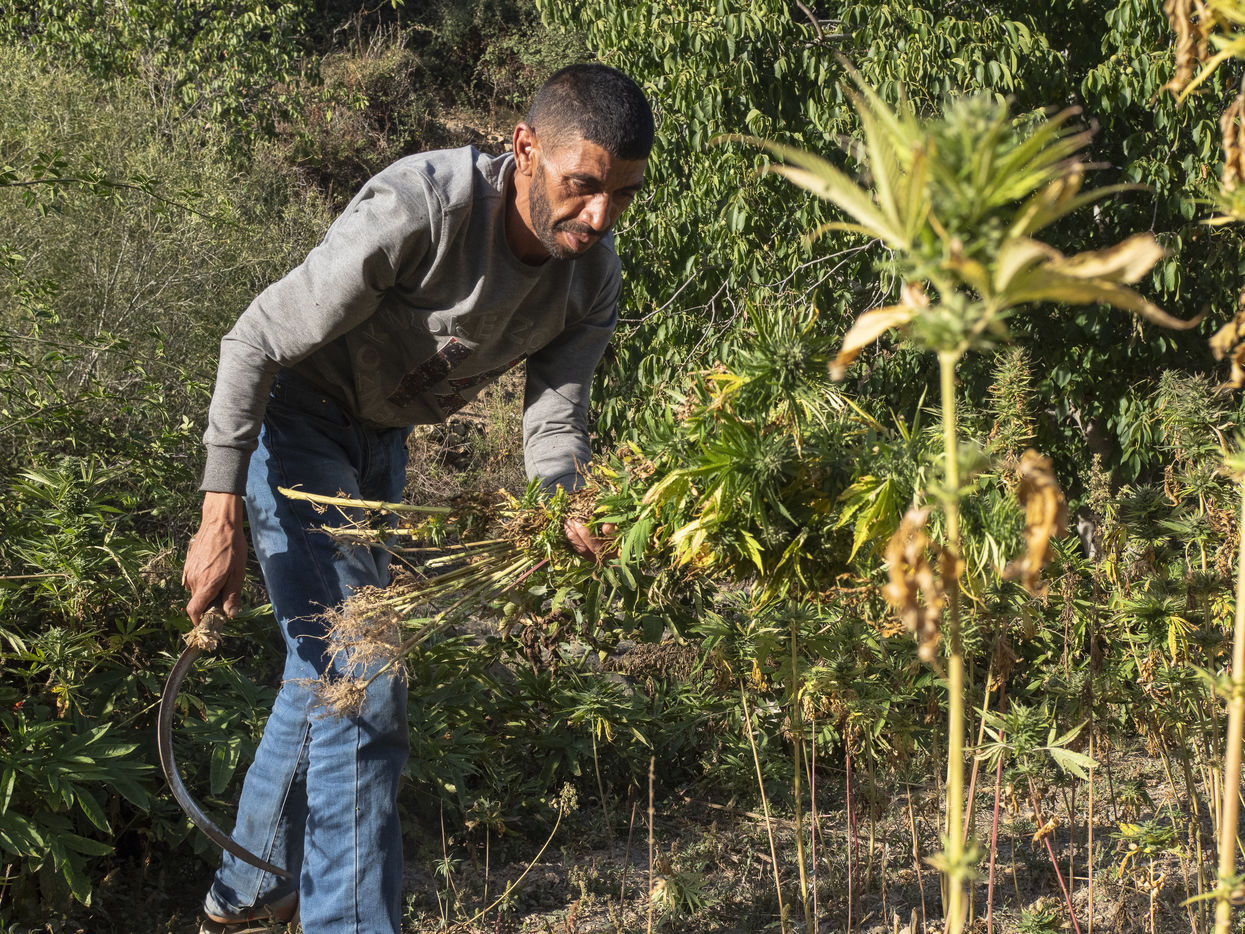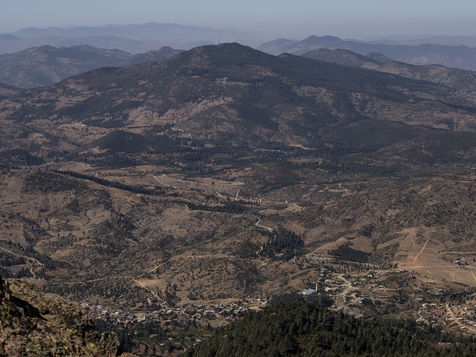Pour accéder à la série en entier, vous devez vous logger ou demander un compte Hans Lucas en cliquant ici.
Paysans du Rif
Dans le village d Azila, commune de Kétama, rencontre avec A* qui cultive sur 8 ha avec sa famille. En ce mois de Septembre la plante est récoltée, pour être séchée. Père de 4 enfants, il connaît tous les grands producteurs du village et travaille avec sa belle-soeur et sa belle-mère dans les champs tous les jours. Un travail pénible et sans répit en ces jours de récolte. Il fait parti des 100 000 paysans, habitant les communes rurales de Ketama, à survivre grâce au Kif, soit 70% des habitants de la vallée de Ketama.
Située dans la région du Rif, la culture du cannabis représente pour cette localité rurale pauvre du Maroc un héritage ancestral et une source de revenue pour la population berbère qui cultive cette plante depuis le 15ème siècle.
En septembre, période de récolte de la plante de cannabis arrivée à maturité, un décor de champs verdoyants formés en terrasses, dressé sous le mont Tidighine où les journaliers venus d un peu partout, ainsi que des paysans s affairent pour la cueillir.
Les femmes jouent un rôle important dans la culture de cannabis, effectuent un travail considérable sans toujours bénéficier de reconnaissance sociale ou de revenus ? sauf si elles vont travailler dans une exploitation agricole autre que celle de la famille, même si généralement la main d oeuvre extérieure dans cette culture est plutôt masculine. Dans les exploitations familiales, elles ne perçoivent pas de salaires.
Pour la petite histoire, c'est pour boycotter les cigarettes françaises (en vente au Maroc pendant la période du Protectorat français du Maroc que le roi Mohammed V donna par décret royal, le droit de planter du kif aux cultivateurs dans la région de Ketama (par ailleurs cultivé depuis plus de 500 ans dans la région). Il faudra attendre le début des années 1970 pour voir arriver dans cette région des hippies, venus fumer le kif marocain. Ils montrèrent aux cultivateurs ketamis les techniques apprises en Afghanistan et au Liban pour faire sécher les plantes, séparer et compresser la résine.
Rif peasants
Cannabis in Morocco has been illegal since the nation's independence in 1956, reaffirmed by a total ban on drugs in 1974, but is partially tolerated in the country. Cannabis has been cultivated in Morocco for centuries and the country is currently among the world's top producers of haschish. As of 2016, Morocco is the world's top supplier of cannabis. In 1890, SultanHassan I instituted strict regulations on cultivation and trade, but also conferred clear cannabis production privileges on several Rif tribes. In the 1950s, the rights of the Rif tribes to cultivate cannabis was reconfirmed, in response to tensions in the restive region. In 1956, with the new independence of Morocco, King Mohammed V prohibited cannabis nationwide. Morocco produces a substantial portion of the world's hashish; it was the top producer for the 2002-2010 period before a 2012 study placed Afghanistan as the top producer. Morocco's 2010 production was 760 tons of cannabis resin. In 2013, 70% of Europe's hashish consumed was produced in Morocco.
Azila is a small berber village near Ketama located in the heart of the Rif valley, at the foot of Mount Tidighine. In september, time of cannabis plant harvest, the whole village bustle in the fields. A*, a peasant from the village, survives thanks to the cannabis plant, he is the father of 4 children and works with his in-laws in his fields, around 8 ha, producing around 1T of cannabis plant which makes around 15 kg of haschich. Hard work and no respite in these days of harvest. He is one of the 100,000 peasants living in the rural communes of Ketama who survive thanks to Kif, around 70% of the people living in this valley.
Even people from the other villages come to work there earning 100 dirham a day. People in this mountain region of Morroco have no choice than growing the cannabis plant considering the lack of job opportunities in this poor region of maroccan Rif.
This serie follows the dailylife of farmers inside Azila village, A* and his family but also other farmers, men and wowen of all ages who work side by side in the fields, taking care of the plant. In traditional production, cannabis stalks are cut from the field in autumn and stored indoors to dry for a month of the rooftops. Afterwards, comes the step of transforming the plant into Kif, or haschich. This berber tribe uses traditional seeds, called Beldiya, but also new hybrid seeds called Critical imported from Holland. Beldiya is known as a top quality plant and the price of kilogram fluctuate between 5$ to 10$ a Gram whereas the price of hybrid Critical can hardly reach 3$ per Gram. Women play an important role in cannabis cultivation, perform considerable work without always receiving social recognition or income, unless they go to work on a farm other than that of the family, even though the external labour force in this culture is generally rather male. In family farms, they do not receive wages.
Cannabis was banned in Morocco following independence, however, the traditional tolerance for its production in the Rif region, plus the recognition that cannabis makes up a large share of the national economy, has led to debate in favor of legalizing cannabis. In 2009, Fouad Ali el Himma received multipartisan support amongst Moroccan politicians for his proposal to re-brand cannabis as a traditional Moroccan herbal remedy rather than a dangerous drug, and called for national debate and reduced prosecution of farmers. In 2014, the Party of Authenticity and Modernity proposed a draft law which would keep consumption of recreational cannabis illegal, but would license and regulate growers and redirect their output to licit medicinal and industrial cannabis products. While talks of legalizing cannabis in Morocco have been taboo for decades, it has become increasingly common to find discussion and support of the topic as of late.
Farmers who grow cannabis in this region, are the weakest link in a chain that involves international smugglers, corrupt officials and sellers.









